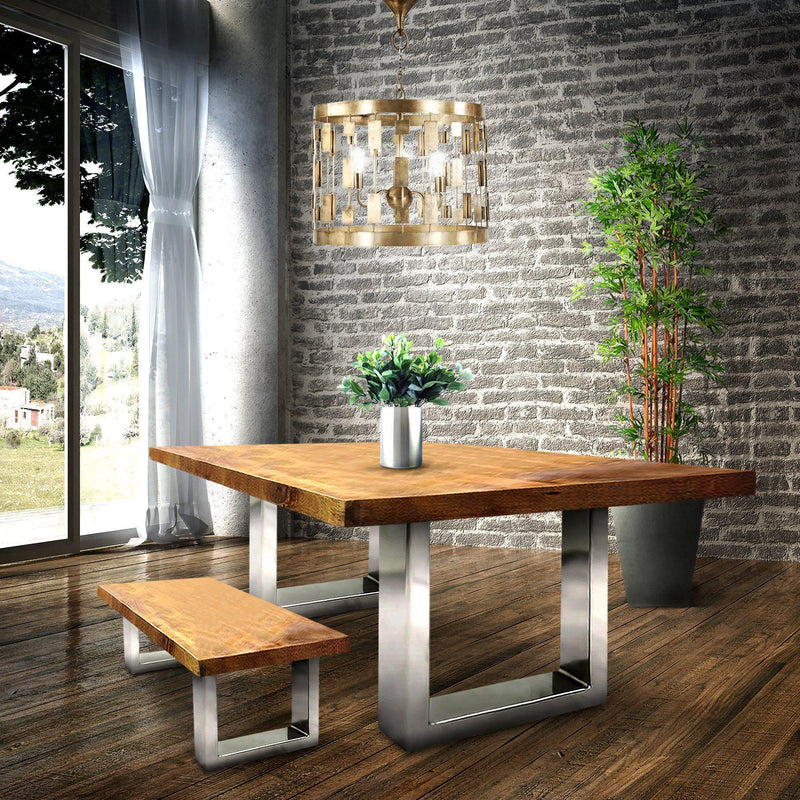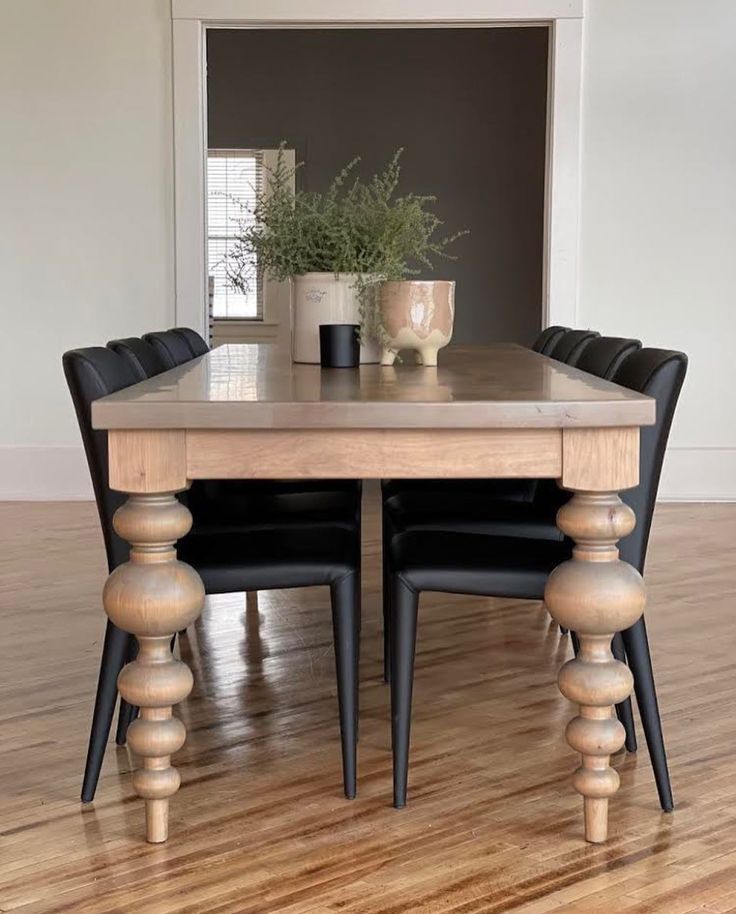Upgrade Your Furniture with Custom Dining Room Table Legs
Upgrade Your Furniture with Custom Dining Room Table Legs
Blog Article
From Traditional to Modern: Find the Suitable Dining-room Table Legs for Your Style
The choice of dining room table legs plays a crucial duty in specifying the general character of your space, linking the gap between standard craftsmanship and modern looks. While classic styles such as cabriole and transformed legs evoke a feeling of timeless sophistication, contemporary styles like barrette and geometric alternatives provide a possibility for striking aesthetic passion. Evaluating the best equilibrium in between these designs requires a nuanced understanding of your existing decoration and individual preference. As you consider these elements, the question stays: how can you effortlessly integrate these diverse leg styles to create an unified eating experience?
Understanding Table Leg Styles
The selection of dining-room table leg styles can considerably affect both the appearances and functionality of the space. Each leg design contributes one-of-a-kind aesthetic components and functional features, dealing with varied design choices and usage requirements. Comprehending these designs is vital for choosing the best dining table that aligns with your total interior decoration vision.
As an example, conical legs provide a clean, traditional look that can boost an area's style, while pedestal bases offer stability and optimize legroom, making them ideal for smaller spaces. Hairpin legs, a characteristic of mid-century contemporary style, introduce an industrial flair, allowing for a ventilated, open feel. In a similar way, trestle legs stimulate rustic charm, providing robust assistance and a feeling of eternity.
Furthermore, the selection of materials plays a considerable role. Wood legs can bring heat and appearance, whereas metal choices commonly share a streamlined, contemporary vibe. Eventually, recognizing table leg styles is crucial for creating a cohesive dining location that shows individual style while making certain usefulness and convenience. By attentively considering these elements, you can enhance both the practical and visual allure of your dining room.
Conventional Table Leg Options
When picking dining space table legs, standard alternatives typically symbolize timeless style and workmanship. These styles reflect a rich heritage and a dedication to top quality, making them suitable for those that value classic appearances.
Among one of the most renowned traditional leg designs is the cabriole leg, identified by its graceful curved shape. This style often features attractive makings and is most typically located in Queen Anne and Chippendale furnishings. One more prominent choice is the transformed leg, which flaunts a collection of smooth, rounded forms that supply a timeless look while preserving security.
Additionally, the straight leg, while basic, uses a basic and tough framework that can mix effortlessly with a variety of tabletop styles. For those attracted to ornate detailing, claw-and-ball feet legs evoke a feeling of majesty and can act as a magnificent focal factor in any type of eating area.
Lastly, stand bases, although not strictly legs, offer a different typical alternative that permits ample legroom and can be beautifully sculpted. Each of these conventional leg designs contributes to the overall setting of an eating area, weding additional info feature with aesthetic allure.

Modern Table Leg Styles
Modern table leg designs offer a diverse variety of styles that stress innovative materials and tidy lines. These designs frequently prioritize functionality while serving as striking prime focus within a dining space. Minimalist visual appeals prevail, with legs crafted from products such as metal, glass, and engineered timber, which add to a contemporary and ventilated feel.
One popular style is the hairpin leg, identified by its slender, conical structure that provides security without frustrating the tabletop (dining room table legs). This design is typically located in mid-century modern-day furniture and can easily match different dining table shapes. One more pattern is making use of geometric forms, where legs may handle asymmetrical or angular types, adding visual rate of interest and a touch of creativity

Blending Styles for One-of-a-kind Areas
Often, homeowners seek to create unique dining areas that reflect their individual style by mixing various layout elements. This strategy enables the consolidation check this of varied appearances, causing a harmonious yet distinct environment. Matching a rustic wood table with streamlined, modern steel legs can produce a distinctive contrast that boosts the room's overall charm.
Additionally, integrating vintage table legs with modern tabletops can evoke a sense of history while maintaining a contemporary sensibility. Such mixes not only display specific preference however also encourage creativity, permitting homeowners to curate an area that feels both personal and welcoming.
Color plays a critical function in this blending process; selecting table legs that enhance or comparison with the existing color pattern can enhance aesthetic interest. Whitewashed legs can soften the daring of a dark table surface, producing a balanced visual.
Tips for Choosing the Right Legs
Picking the right table legs is important for attaining both capability and visual charm in your eating room. Begin by considering the overall design of your room. Standard settings take advantage of legs that feature intricate makings or transformed designs, while modern rooms might ask for sleek, minimalist designs.
Next, assess the height and stability of the legs. dining room table legs. Basic table vary between 28 to 30 inches in elevation, so ensure the legs enhance this dimension for convenience. In addition, durable products, such as wood or metal, can boost security and longevity
Assess the leg form also-- options include directly, tapered, or stand styles. Straight legs provide a timeless appearance, while conical legs can add a touch of beauty. Pedestal bases supply sufficient legroom and are perfect for smaller sized rooms.
Final Thought
In summary, choosing the Get More Info excellent dining-room table legs calls for mindful factor to consider of both conventional and modern designs. Standard options such as cabriole and turned legs provide classic sophistication, while modern designs like barrette and geometric forms give a contemporary touch. By balancing leg design, elevation, and material with the overall décor, a cohesive and welcoming environment can be attained. Inevitably, the chosen table legs should reflect the desired visual, enhancing the dining experience within the space.
The range of eating room table leg designs can substantially influence both the looks and functionality of the area. Inevitably, recognizing table leg designs is essential for producing a natural dining area that mirrors individual style while making sure functionality and convenience.One of the most iconic standard leg styles is the cabriole leg, defined by its elegant bent form. Straight legs supply a traditional look, while conical legs can include a touch of elegance.In summary, choosing the suitable eating room table legs calls for mindful factor to consider of both conventional and contemporary designs.
Report this page